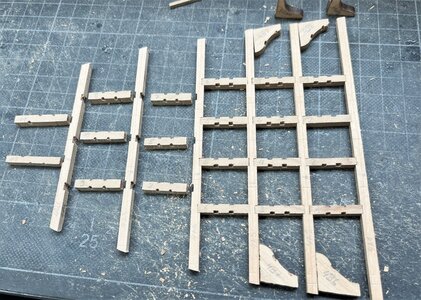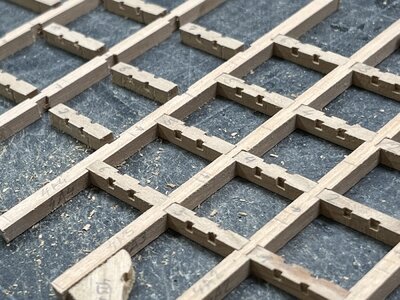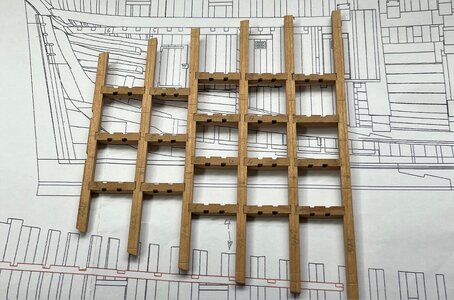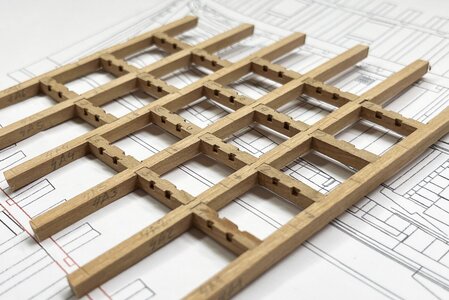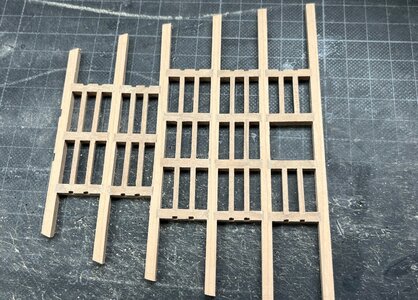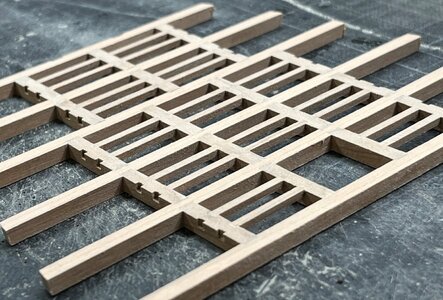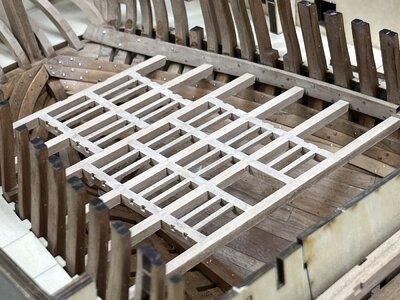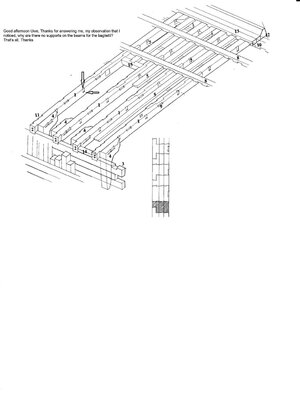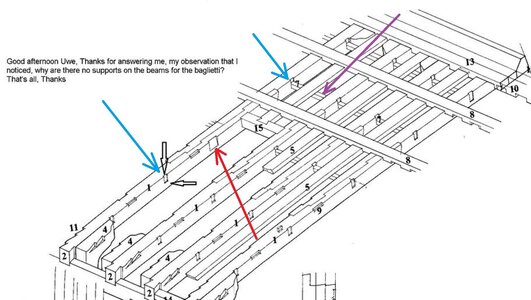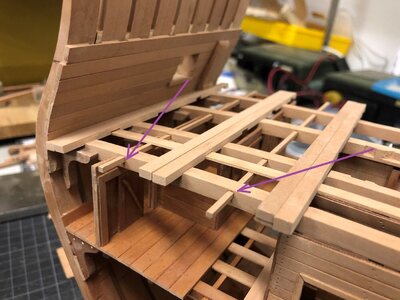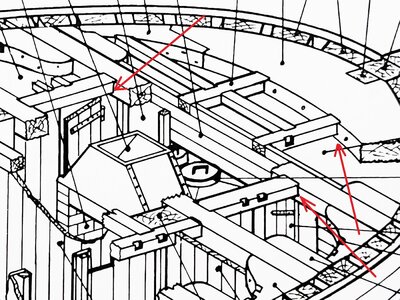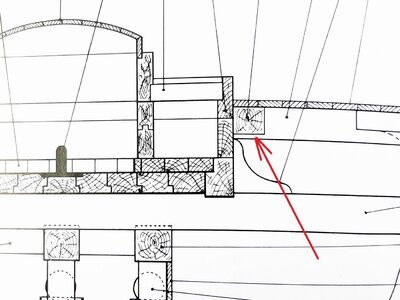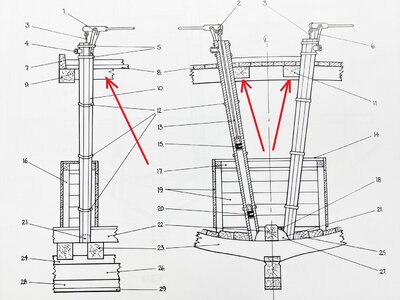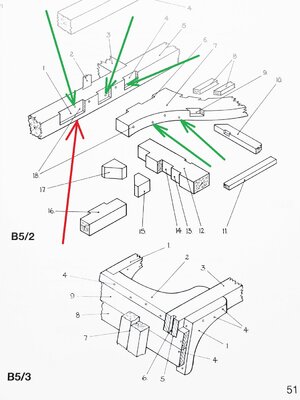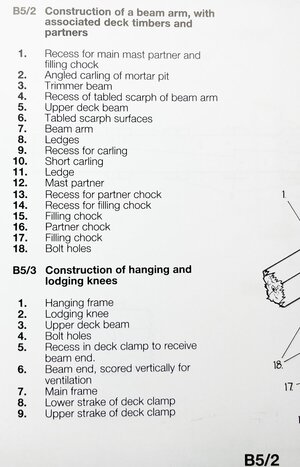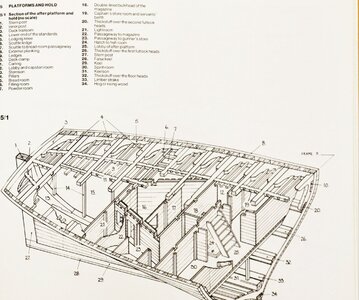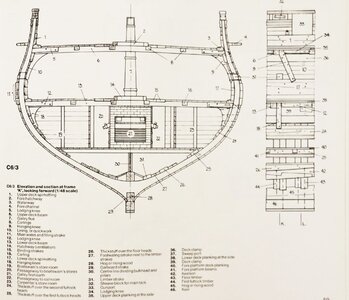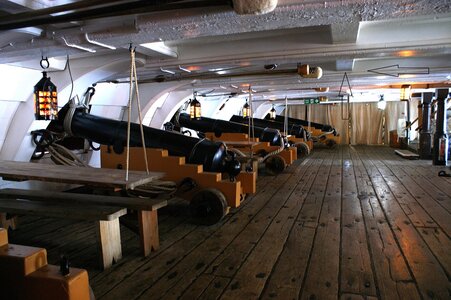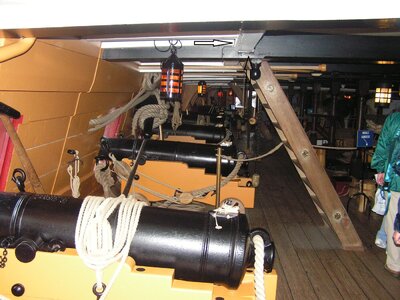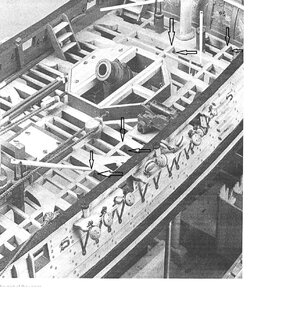I love this post, Uwe. Another cut of a model!Step by step it is getting closer to the decision how, when and where I have to cut my ships hull horizontal to get the two segments
As you know I plan to present my model somehow similar like the Leighton model
View attachment 331361
View attachment 331362
I am still on the beginning of this Brainstorming - in moment it is still a storm in my brain
So the first decision will be "WHERE" can I make the cut, including the definition, which parts will be installed at the lower part and which elements will be fixed to the upper part of the ships model
First the appr. line for the cut on the CAF-drawing
The cut will be slightly under the clamps of the main deck but over the clamps for the mortar bed beams
View attachment 331370
This height is also confirmed by the the photos of the model
View attachment 331368
Here we can see that the leighton model is partly simplified close to the stern
View attachment 331367
The model Tom from CAF was showing (I do not know, who is the modeler of this one) has the devision also in this height.
View attachment 331369
From now on it will definitely be running through your mind: When ....... When .... When.... Until you give in.
Regards, Peter







